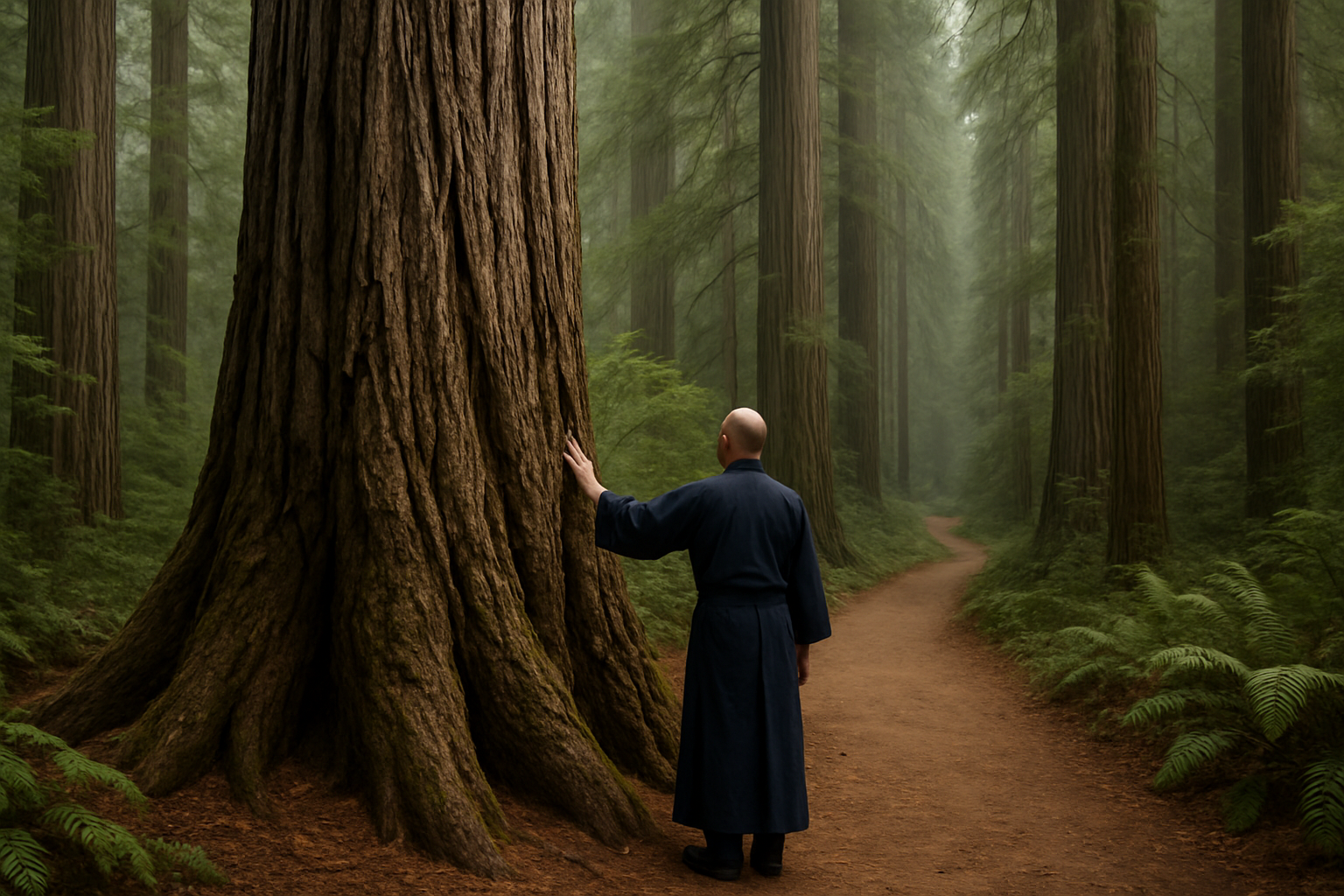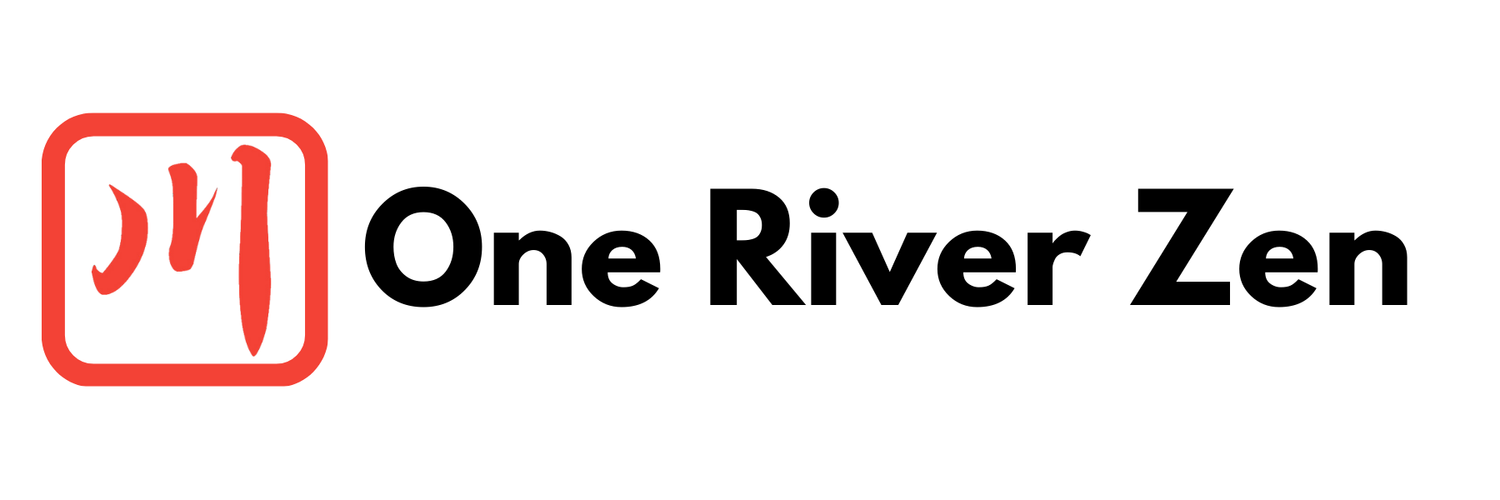
One River Zen Weekly Newsletter | December 9, 2025
Come join us for meditation or a retreat as this year comes to a close, and we begin to awaken to the possibilities 2026 will bring!

Your true nature begins where identities end | Daily Zen
This morning’s Daily Zen Talk — a reminder that every mask we wear eventually slips. Sit and see what’s underneath…

The Garuda Trap: Why Your Enlightenment Fails the Moment You Leave Retreat | Shōyōroku 44
You've tasted the peace of retreat, but what happens the moment you walk out the door? Sensei Michael Brunner reveals the Garuda Trap: the instant surge of karmic momentum that destroys your clarity. Learn the only way to avoid becoming the blind turtle, crushed under Mount Sumeru. Don't just leave retreat—master your re-entry.

Zen, Compassion & Koans: Sensei Michael Brunner on Ungan's Great Compassionate One | Shōyōroku 54
Zen priest Sensei Michael Brunner explores the profound difference between "all over the body" and "throughout the body" compassion, rooted in the ancient Ungan’s Great Compassionate One koan.
Find out how this teaching manifests in the community missions of One River Zen in Ottawa, Illinois. Learn why real practice isn't about being a "perfect Buddhist," but about the instant, unhesitating response of reaching for your pillow in the dark.

Ummon’s Mount Sumeru: Meeting the Obstacles of the Mind with Zen Clarity | Shōyōroku 19
When the mind grows still, the mountain appears. In this reflection on Case 19 of the Shōyōroku, Sensei Michael Brunner of One River Zen in Ottawa, IL, explores Ummon’s simple yet profound response—“Mount Sumeru.” What does it mean to meet life’s obstacles not with resistance, but with clarity and wonder?

Mountains, Rivers, and the True Will | Shōyōroku 100
When every movement of the heart leans toward desire or resistance, how do we know what direction is true?
In this Dharma talk, Sensei Sōen Michael Brunner, Abbot of One River Zen in Ottawa, Illinois, turns to the final case of the Book of Equanimity — Rōya’s Mountains and Rivers — to explore what it means to live from original nature rather than from the push and pull of the egoic self.
Drawing unlikely parallels between Aleister Crowley’s “Do what thou wilt” and John the Baptist’s “He must increase, I must decrease,” Sensei Sōen shows how Zen cuts through both self-assertion and self-erasure to reveal the clear and boundless life that gives rise to mountains, rivers, and this very breath.

Heart Sutra — Class One | Ango 2025 | Shuso Genpo Seth Myers
During the 2025 Ango at One River Zen, Shuso Genpo Seth Myers opened our four-week Heart Sutra study by returning us to the basics — not as beginners in knowledge, but as beginners in seeing. Rather than analyzing the Sutra as philosophy, this first class turns us back toward direct experience: what remains when the grasping mind falls silent.

Hōgen's Hair's-Breadth: Shōyōroku Case 17
In this morning talk, Sensei Michael Brunner of One River Zen in Ottawa, Illinois, takes up Case 17 of the Shōyōroku, where a single “hair’s-breadth” is enough to split Heaven and Earth. What begins as a brief exchange between two Zen masters becomes a mirror for the way we create distance from our own lives — every time we compare, resist, or try to understand rather than meet just this.

The True Path: Shaseki shū 56–A talk by Chisō Robb Hasty
Chisō Robb Hasty — a student at One River Zen in Ottawa, Illinois and the current Mayor of Ottawa — reflects on a brief koan in which the Zen master Ikkyū visits the dying monk Ninakawa. What unfolds in just a few lines dismantles one of our most unquestioned convictions: that we come into life alone and leave it alone. With the clarity of a single sentence, Ikkyū reveals a path where there is no coming and no going — a reality already present beneath the stories we tell about ourselves.

Baso’s White and Black | Shōyōroku 6
As sesshin closed, we turned to Case 6 of the Shōyōroku—Baso’s “White and Black.” What begins as a monk’s search for meaning becomes a living exchange of silence, headache, and not-knowing. Baso’s answer isn’t spoken; it’s embodied. White and black—two gestures of one mind—point to the truth that never stops walking.
